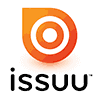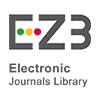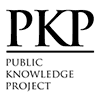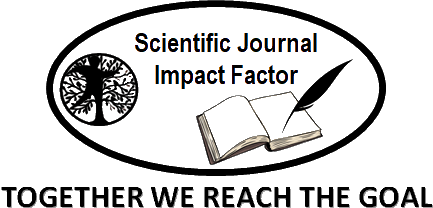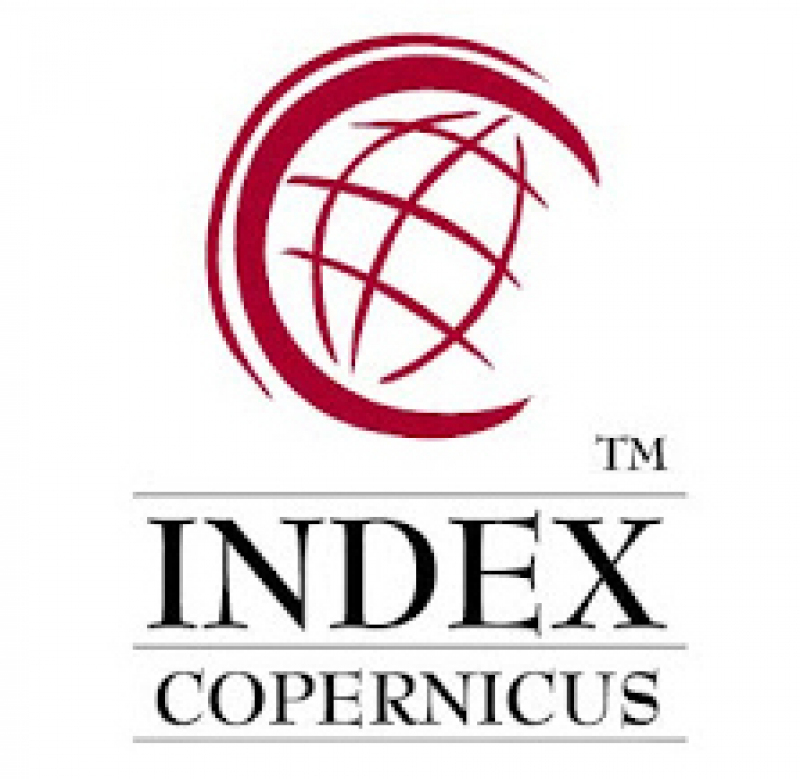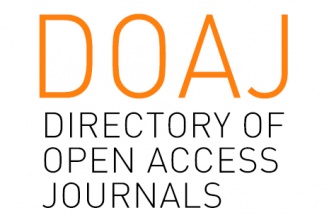The Role of Civic Engagement in Sustaining Wetland Environments: Evidence from North Banjarmasin District
Abstract
The research aims to examine how civic engagement is actualized in the daily lives of riverbank residents and how the local government supports this process. It employs a qualitative case study method with data collected through field observations and interviews involving 32 informants. Supporting literature and administrative documents were used as secondary sources, and data validation was conducted using triangulation of techniques and sources. The findings show that Civic engagement in North Banjarmasin’s riverbank communities is reflected in collective action, deliberation, and communication, but faces challenges such as socioeconomic limitations, inadequate facilities, and low environmental awareness. Government programs provide a foundation, yet their impact is weakened by limited follow-up and inconsistent participation. Strengthening wetland sustainability therefore requires responsive government communication, better infrastructure, systematic follow-up, and the cultivation of collective awareness, enabling more consistent collaboration between institutions and local residents.
Keywords
Full Text:
PDFReferences
Angriani, P., Sumarmi, Ruja, I. N., & Bachri, S. (2018). River management: The importance of the roles of the public sector and community in river preservation in Banjarmasin (A case study of the Kuin River, Banjarmasin, South Kalimantan – Indonesia). Sustainable Cities and Society, 43, 11–20. https://doi.org/10.1016/j.scs.2018.08.004
Baú, V. (2016). Citizen engagement in peacebuilding: A communication for development approach to rebuilding peace from the bottom-up. Progress in Development Studies, 16(4), 348–360. https://doi.org/10.1177/1464993416663052
Bian, Q., Xin, L., & Li, Y. (2024). Towards a more globally inclusive academic discussion on local government: is more attention to Asian countries the answer? Local Government Studies, 50(6), 1153–1165. https://doi.org/10.1080/03003930.2024.2407904
Billard, T. J. (2022). Together We Rise: The Role of Communication and Community Connectedness in Transgender Citizens’ Civic Engagement in the United States. Mass Communication and Society, 25(3), 335–360. https://doi.org/10.1080/15205436.2021.1954197
Brudney, J. L., Prentice, C. R., & Harris, J. L. (2018). Beyond the Comfort Zone? County Government Collaboration with Private-Sector Organizations to Deliver Services. International Journal of Public Administration, 41(16), 1374–1384. https://doi.org/10.1080/01900692.2017.1390582
Calvo, M., & Sclater, M. (2021). Creating Spaces for Collaboration in Community Co-design. International Journal of Art and Design Education, 40(1), 232–250. https://doi.org/10.1111/jade.12349
Chen, P. K., & Ye, Y. (2022). Influence of creating an oligopoly through government intervention to improve partner collaboration intentions in the context of green supply chains. Environmental Science and Pollution Research, 29(5), 6433–6448. https://doi.org/10.1007/s11356-021-16064-x
Cheng, Y. (Daniel). (2019). Governing Government-Nonprofit Partnerships: Linking Governance Mechanisms to Collaboration Stages. Public Performance and Management Review, 42(1), 190–212. https://doi.org/10.1080/15309576.2018.1489294
Cochrane, C. (2021). Consensus Government and Collaboration: The COVID-19 Pandemic in Canada’s North and the Role Partnership Played in Protecting the Health and Well-being of Residents. State and Local Government Review, 53(2), 103–105. https://doi.org/10.1177/0160323X211027865
de Vries, S. (2020). Place identity and major project deliberation: the contribution of local governments in Australia. Australian Geographer, 0(0), 399–419. https://doi.org/10.1080/00049182.2020.1788269
Edelenbos, J., van Meerkerk, I., & Schenk, T. (2018). The Evolution of Community Self-Organization in Interaction With Government Institutions: Cross-Case Insights From Three Countries. American Review of Public Administration, 48(1), 52–66. https://doi.org/10.1177/0275074016651142
Febriyanti, D., Widianingsih, I., Sumaryana, A., & Buchari, R. A. (2023). Information Communication Technology (ICT) on Palembang city government, Indonesia: Performance measurement for great digital governance. Cogent Social Sciences, 9(2). https://doi.org/10.1080/23311886.2023.2269710
Figenschou, T. U., & Thorbjørnsrud, K. (2018). Mediated Agency, Blame Avoidance and Institutional Responsibility: Government Communication in a Personalised Media Landscape. Scandinavian Political Studies, 41(2), 210–232. https://doi.org/10.1111/1467-9477.12117
Goncalves, J., Liu, Y., Xiao, B., Chaudhry, S., Hosio, S., & Kostakos, V. (2015). Increasing the reach of government social media: A case study in modeling government-citizen interaction on Facebook. Policy and Internet, 7(1), 80–102. https://doi.org/10.1002/poi3.81
Gregory, A. (2019). UK Government Communication: The Cameron years and their ongoing legacy. Public Relations Review, 45(2), 202–216. https://doi.org/10.1016/j.pubrev.2018.08.003
Griggs, D., Smith, M. S., Rockström, J., Öhman, M. C., Gaffney, O., Glaser, G., Kanie, N., Noble, I., Steffen, W., & Shyamsundar, P. (2014). An integrated framework for sustainable development goals. Ecology and Society, 19(4). https://doi.org/10.5751/ES-07082-190449
Grönlund, K., Herne, K., & Setälä, M. (2017). Empathy in a Citizen Deliberation Experiment. Scandinavian Political Studies, 40(4), 457–480. https://doi.org/10.1111/1467-9477.12103
Hadinata, I. Y., & Muchamad, B. N. (2018). Studi Penyusunan dan Penentuan Sempadan Sungai di Kota Banjarmasin. Jurnal Kebijakan Pembangunan, 13(1), 1–7. https://www.jkpjournal.com/index.php/menu/article/view/86
Hammond, M. (2020). Democratic deliberation for sustainability transformations: between constructiveness and disruption. Sustainability: Science, Practice, and Policy, 16(1), 220–230. https://doi.org/10.1080/15487733.2020.1814588
Hampton, K. N. (2016). Persistent and Pervasive Community: New Communication Technologies and the Future of Community. American Behavioral Scientist, 60(1), 101–124. https://doi.org/10.1177/0002764215601714
Henderson, S. (2018). Competitive sub-metropolitan regionalism: Local government collaboration and advocacy in northern Melbourne, Australia. Urban Studies, 55(13), 2863–2885. https://doi.org/10.1177/0042098017726737
Hendriks, A. M., Jansen, M. W. J., Gubbels, J. S., De Vries, N. K., Molleman, G., & Kremers, S. P. J. (2015). Local government officials[U+05F3] views on intersectoral collaboration within their organization - A qualitative exploration. Health Policy and Technology, 4(1), 47–57. https://doi.org/10.1016/j.hlpt.2014.10.013
Jacoby, B. (2009). Civic engagement in higher education: concepts and practices. Jossey-Bass.
Karjalainen, M., & Rapeli, L. (2015). Who will not deliberate? Attrition in a multi-stage citizen deliberation experiment. Quality and Quantity, 49(1), 407–422. https://doi.org/10.1007/s11135-014-9993-y
Kenna, J. L., & Hensley, M. A. (2019). Utilizing Social Media to Promote Civic Engagement in the Social Studies Classroom. The Social Studies, 110(2), 86–94. https://doi.org/10.1080/00377996.2018.1524360
Lee, F. L. F. (2015). Social movement as civic education: communication activities and understanding of civil disobedience in the Umbrella Movement. Chinese Journal of Communication, 8(4), 393–411. https://doi.org/10.1080/17544750.2015.1057192
Liu, W., & Nah, S. (2022). Community Attachment, Communication Mediation, and Nonprofit Participation: An Integrated Community Communication Approach. Voluntas, 33(2), 269–283. https://doi.org/10.1007/s11266-020-00276-9
Lo Bianco, S., & Princen, S. B. M. (2019). How strong is deliberation in EU intergovernmental decision making? Deliberation in the field of Justice and Home Affairs. Journal of European Integration, 41(6), 729–744. https://doi.org/10.1080/07036337.2019.1587419
Michiani, M. V., & Asano, J. (2019). Physical upgrading plan for slum riverside settlement in traditional area: A case study in Kuin Utara, Banjarmasin, Indonesia. Frontiers of Architectural Research, 8(3), 378–395. https://doi.org/10.1016/j.foar.2019.03.005
Milam, J. M. D., & Heath, R. G. (2014). Participative Democracy and Voice: Rethinking Community Collaboration Beyond Neutral Structures. Journal of Applied Communication Research, 42(4), 366–386. https://doi.org/10.1080/00909882.2014.911944
Mitozo, I., & Marques, F. P. J. (2019). Context Matters! Looking Beyond Platform Structure to Understand Citizen Deliberation on Brazil’s Portal e-Democracia. Policy and Internet, 11(3), 370–390. https://doi.org/10.1002/poi3.196
Muhaimin, M., & Jumriani, J. (2023). Analisis Permasalahan Sampah Rumah Tangga di Bantaran Sungai Kota Banjarmasin. ASANKA : Journal of Social Science and Education, 4(1), 34–43. https://doi.org/10.21154/asanka.v4i1.5151
Niemeyer, S. (2020). Deliberation and ecological democracy: from citizen to global system. Journal of Environmental Policy and Planning, 22(1), 16–29. https://doi.org/10.1080/1523908X.2019.1661232
Ott, M. A., & Knopf, A. S. (2019). Avoiding a Tyranny of the Majority: Public Deliberation as Citizen Science, Sensitive Issues, and Vulnerable Populations. American Journal of Bioethics, 19(8), 28–31. https://doi.org/10.1080/15265161.2019.1619870
Pearse, H. (2020). Deliberation, Citizen Science and Covid-19. Political Quarterly, 91(3), 571–577. https://doi.org/10.1111/1467-923X.12869
Pocock, M. J. O., Roy, H. E., & August, T. (2019). Developing the global potential of citizen science: Assessing opportunities that benefit people, society and the environment in East Africa. Journal of Applied Ecology, 56(2), 274–281. https://doi.org/10.1111/1365-2664.13279
Pret, T., & Carter, S. (2017). The importance of ‘fitting in’: collaboration and social value creation in response to community norms and expectations. Entrepreneurship and Regional Development, 29(7–8), 639–667. https://doi.org/10.1080/08985626.2017.1328903
Reichert, F., & Print, M. (2017). Mediated and moderated effects of political communication on civic participation. Information Communication and Society, 20(8), 1162–1184. https://doi.org/10.1080/1369118X.2016.1218524
Sanders, K. B. (2020). British government communication during the 2020 COVID-19 pandemic: learning from high reliability organizations. Church, Communication and Culture, 5(3), 356–377. https://doi.org/10.1080/23753234.2020.1824582
Setälä, M. (2025). Inclusive deliberation for future-regarding governance: potentials and pitfalls. Policy Studies, 1–19. https://doi.org/10.1080/01442872.2025.2454488
Shulla, K., Leal Filho, W., Sommer, J. H., Lange Salvia, A., & Borgemeister, C. (2020). Channels of collaboration for citizen science and the sustainable development goals. Journal of Cleaner Production, 264, 121735. https://doi.org/10.1016/j.jclepro.2020.121735
Southby, K., & Gamsu, M. (2018). Factors affecting general practice collaboration with voluntary and community sector organisations. Health and Social Care in the Community, 26(3), e360–e369. https://doi.org/10.1111/hsc.12538
Sugiyono. (2015). Metode Penelitian Kuantitatif, Kualitatif Dan Kombinasi (Mixed Methods). Alfabeta.
Terhorst, C., Rommes, E., Bogert, K. van den, & Verharen, L. (2024). The everyday civic engagement of social work students. Social Work Education, 00(00), 1–17. https://doi.org/10.1080/02615479.2024.2308681
Tianguang, M. (2019). Responsive Government: The Diversity and Institutional Performance of Online Political Deliberation Systems. Social Sciences in China, 40(4), 148–172. https://doi.org/10.1080/02529203.2019.1674041
Zhen, F., Qin, X., Jiang, Y., & Chen, H. (2019). Effects of Community Community Communication Technology (ICT) Usage on Community Satisfaction: Case Study in Nanjing, China. Chinese Geographical Science, 29(5), 834–847. https://doi.org/10.1007/s11769-019-1072-9
Zilliox, S., & Smith, J. M. (2018). Colorado’s Fracking Debates: Citizen Science, Conflict and Collaboration. Science as Culture, 27(2), 221–241. https://doi.org/10.1080/09505431.2018.1425384
DOI: http://dx.doi.org/10.18415/ijmmu.v12i10.7117
Refbacks
- There are currently no refbacks.
Copyright (c) 2025 International Journal of Multicultural and Multireligious Understanding

This work is licensed under a Creative Commons Attribution-NonCommercial-NoDerivatives 4.0 International License.
https://ijmmu.com
editor@ijmmu.com
facebook.com/ijmmu
Copyright © 2014-2018 IJMMU. All rights reserved.













